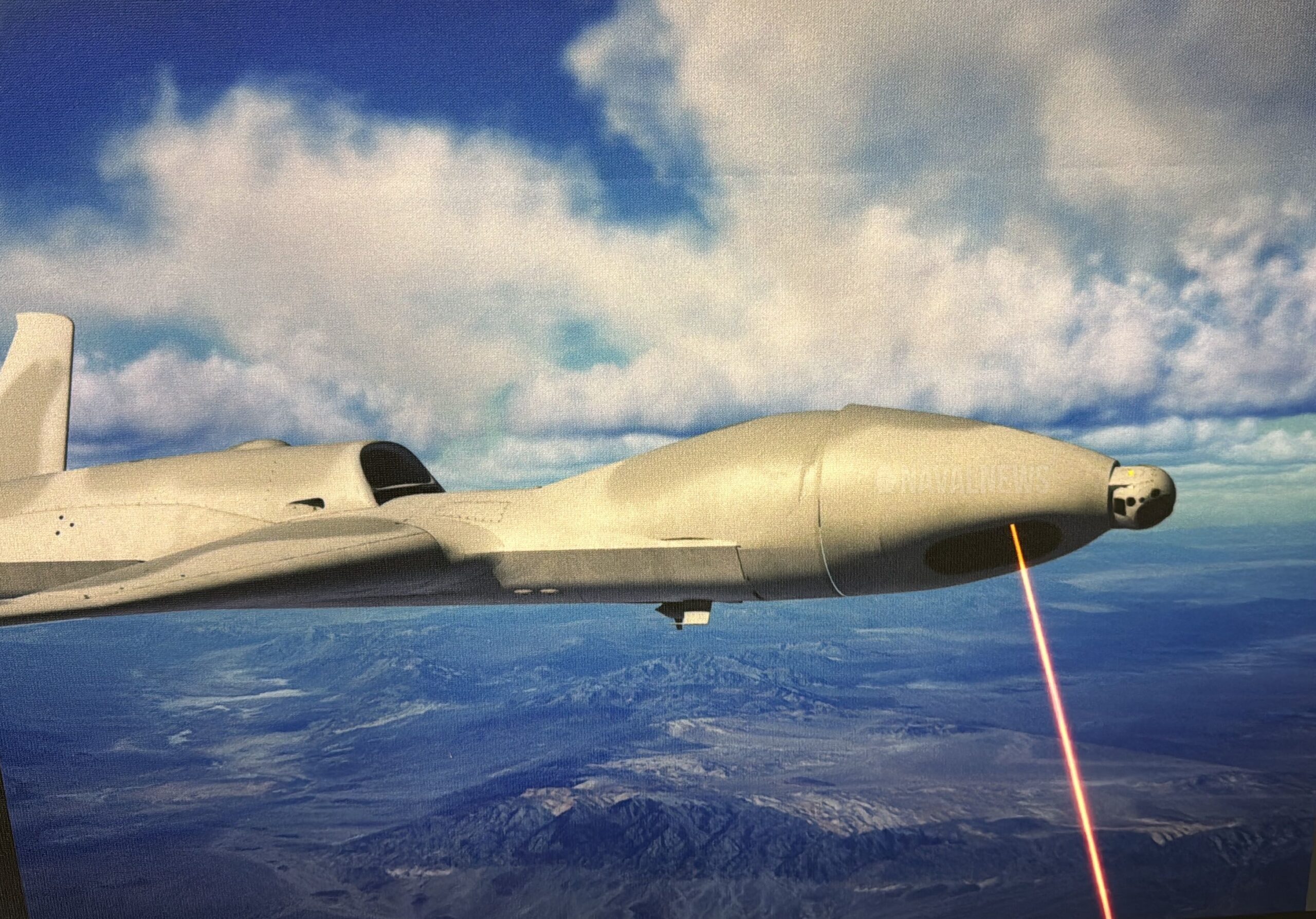Copyright defence-blog

General Atomics is developing a new concept for its jet-powered MQ-20 Avenger drone, featuring a rotating high-energy combat laser integrated into the nose section—a design aimed at expanding the drone’s future role in unmanned strike and air defense missions. The image, shared by Naval News contributor Carter Johnston, shows the Avenger equipped with a nose-mounted turret resembling a ball-type sensor, which typically houses electro-optical and infrared sensors along with laser rangefinding systems. In this design, however, the turret is intended to serve as a combat laser weapon. While the company has described the new design as “purely conceptual,” it signals a shift in General Atomics’ long-term roadmap to integrate directed-energy weapons into its unmanned aerial systems. The proposed system would allow the Avenger to deliver precise, rapid-fire engagements with no visible launch signature. “A final version could take many forms — as a podded system on an MQ-9B or Gray Eagle STOL, for instance, or as an integrated weapon on our Gambit family of combat jets,” said Mark Brinkley, a spokesperson for General Atomics, in comments to The War Zone. “The bottom line is that General Atomics continues to invest our own money into advancing unmanned combat aerial vehicles (UCAVs) and lasers, both individually and as integrated systems.” The concept envisions the MQ-20 performing strike and air-defense suppression missions while remaining stealthy and persistent in contested environments. Company officials believe such a platform, if realized, could perform silent engagements without expending traditional munitions and without revealing its location through radar or visual detection. High-energy laser systems are valued for their near-instantaneous engagement speed, low per-shot cost, and ability to neutralize threats without collateral damage. When paired with a long-endurance unmanned platform like the MQ-20, such systems could be used against cruise missiles, drones, or even manned aircraft under specific conditions. The MQ-20 Avenger, a jet-powered UCAV with a stealthy profile and internal weapons bay, is already in testing for a range of roles including ISR, strike, and loyal wingman missions. It has been used in experiments with the U.S. Navy and Air Force to evaluate unmanned systems working in tandem with crewed fighters. General Atomics has also promoted the Avenger as part of its “Gambit” family of future UCAVs. These aircraft are intended to operate semi-independently or as escorts for manned aircraft, expanding the operational flexibility of U.S. air forces. “We are certainly exploring how those products could be combined to provide a variety of new opportunities for warfighters, including counter-uncrewed aerial systems and other uses,” Brinkley added. Although the laser-armed Avenger remains conceptual, the release highlights growing interest in equipping unmanned aircraft with directed-energy weapons. As power generation and cooling technologies continue to mature, defense manufacturers are seeking ways to bring these capabilities into fielded systems. General Atomics has not released details on laser power levels, targeting systems, or integration timelines. The company emphasized that further development would depend on internal investment, government interest, and the evolving operational needs of U.S. forces.



